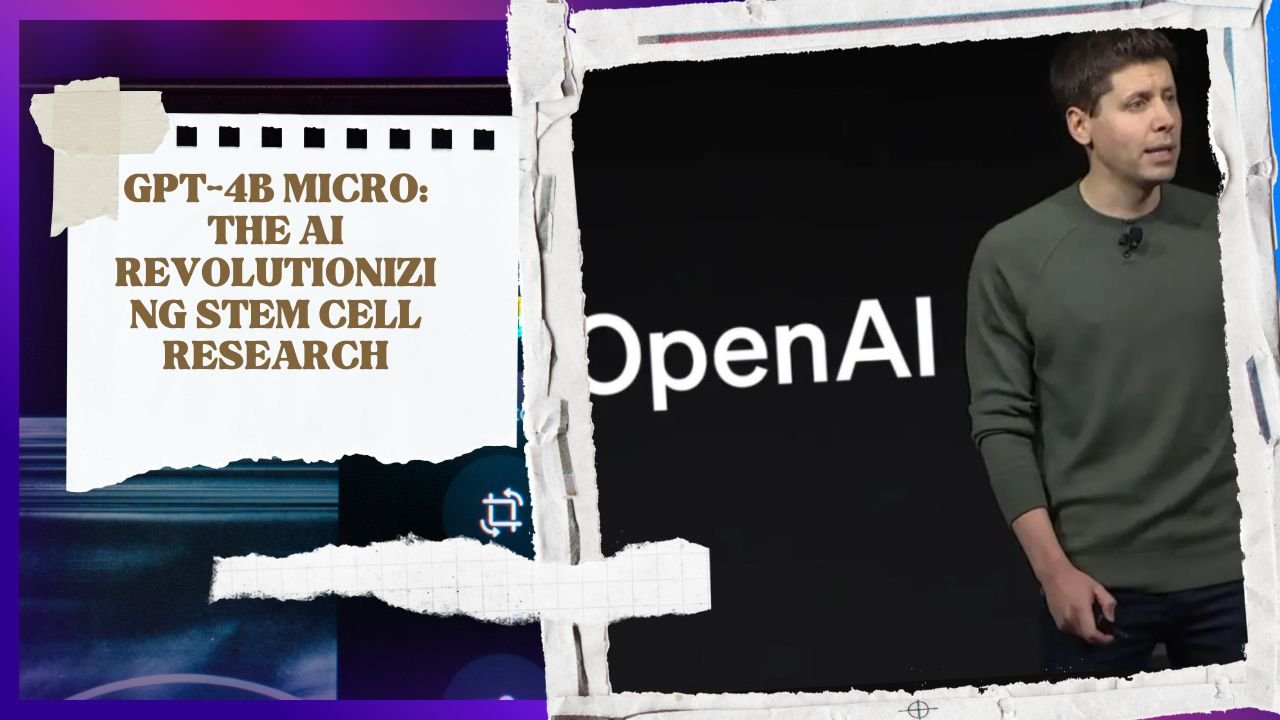What’s the Big Deal About GPT-4b Micro?
Imagine a world where regenerating damaged organs or reversing age-related diseases is as simple as tweaking a protein. OpenAI, in collaboration with Retro Biosciences, has taken a giant leap in making this vision a reality with the development of GPT-4b micro—a cutting-edge AI model designed to supercharge stem cell production. This revolutionary project isn’t just about making AI smarter; it’s about redefining the boundaries of human longevity.
Let’s dive into how GPT-4b micro is transforming stem cell research and why it’s a game-changer for regenerative medicine.
Cracking the Code: What Makes GPT-4b Micro Special?
GPT-4b micro is an AI model tailored for protein engineering—a cornerstone of cellular reprogramming. By training on protein sequences and their interactions, this model takes bold steps in redesigning proteins essential for transforming regular cells into stem cells.
Key Features of GPT-4b Micro:
- Redefining Yamanaka Factors: Yamanaka factors (Oct4, Sox2, Klf4, and c-Myc) are proteins that reprogram adult cells into stem cells. GPT-4b micro proposes modifications to up to a third of a protein’s amino acids, an audacious move unheard of in traditional methods.
- Dreaming Up New Proteins: Beyond analysis, this AI generates entirely new proteins with the potential to outperform existing ones.
- Efficiency Boost: Preliminary tests show a 50-fold improvement in creating stem cells compared to conventional methods.
This isn’t just about better results; it’s about reshaping the field of stem cell research, which has struggled with inefficiencies for decades.
| Aspect | Traditional Methods | GPT-4b Micro |
| Efficiency | Success rates below 1% | 50-fold improvement |
| Time Required | Several weeks | Significantly faster |
| Protein Modifications | Limited and conservative | Bold alterations of amino acids |
The OpenAI and Retro Biosciences Connection
This groundbreaking project is rooted in a powerful partnership. OpenAI teamed up with Retro Biosciences, a startup backed by Sam Altman’s $180 million investment, to push the boundaries of longevity science. Their shared mission? Extend human lifespan by at least 10 years.
By integrating OpenAI’s expertise in artificial intelligence with Retro Biosciences’ focus on age-related research, they’ve created a synergy that could redefine how we approach regenerative medicine. While GPT-4b micro remains a research model for now, both organizations are committed to publishing their findings, setting the stage for future innovations.
Why Does This Matter for Stem Cell Production?
For decades, converting adult skin cells into stem cells has been a tedious process with low success rates. GPT-4b micro changes the game by streamlining this process:
- Efficiency Gains: Traditional methods required weeks and yielded minimal results. The AI’s ability to enhance two key Yamanaka factors by 50 times could dramatically reduce time and resource investment.
- Broader Applications: With improved efficiency, researchers can explore:
- Organ development for transplants
- Cell replacement therapies for conditions like Parkinson’s
- Innovative treatments for aging-related diseases
By addressing long-standing challenges in stem cell research, this AI-powered approach opens new doors in regenerative medicine.
Impact on Regenerative Medicine
The potential impact of GPT-4b micro extends far beyond the lab. Here’s how it could revolutionize the field:
1. Organ Transplants
Imagine growing a replacement liver or kidney tailored specifically to a patient. AI-enhanced stem cells could make organ shortages a thing of the past.
2. Degenerative Disease Therapies
Conditions like Alzheimer’s or Parkinson’s often result from the loss of specific cell types. GPT-4b micro’s efficiency could enable cost-effective cell replacement therapies, offering new hope to millions.
3. Personalized Medicine
Tailoring treatments based on an individual’s genetic makeup becomes easier with faster and more reliable stem cell production. This could lead to breakthroughs in treating age-related conditions.
Challenges and the Road Ahead
While the preliminary results are promising, the scientific community awaits peer-reviewed validation. Key hurdles include:
- Commercial Viability: Scaling GPT-4b micro for widespread use will require significant investment.
- Regulatory Approval: As with any medical breakthrough, navigating regulatory pathways will be crucial.
- Ethical Considerations: The fusion of AI and biotechnology raises important ethical questions about accessibility and misuse.
Despite these challenges, the collaboration between OpenAI and Retro Biosciences represents a bold step forward. It underscores the potential of merging AI with life sciences to tackle some of humanity’s biggest problems.
The Future: A World Transformed by AI-Driven Medicine
The development of GPT-4b micro is a testament to the power of innovation. By leveraging artificial intelligence to solve complex biological problems, OpenAI and Retro Biosciences are not just advancing science—they’re redefining what’s possible in human health.
From improving stem cell production to exploring new frontiers in regenerative medicine, the implications of this technology are profound. While there’s still much work to be done, one thing is clear: the future of medicine is here, and it’s powered by AI.

